Manage Storage#
Storage resources allow you to securely manage and distribute data storage configurations—such as S3 buckets and their credentials—across your organization and projects. This guide explains how to create, assign, and delete storage resources using the Resource Manager UI.
Storage Table#
The main storage page displays all storage configurations in your organization. Each entry includes key details such as the storage name, type, current status, scope, assigned projects, when and by whom it was created. You can filter or search storage by name or type, and use pagination to browse through the list.
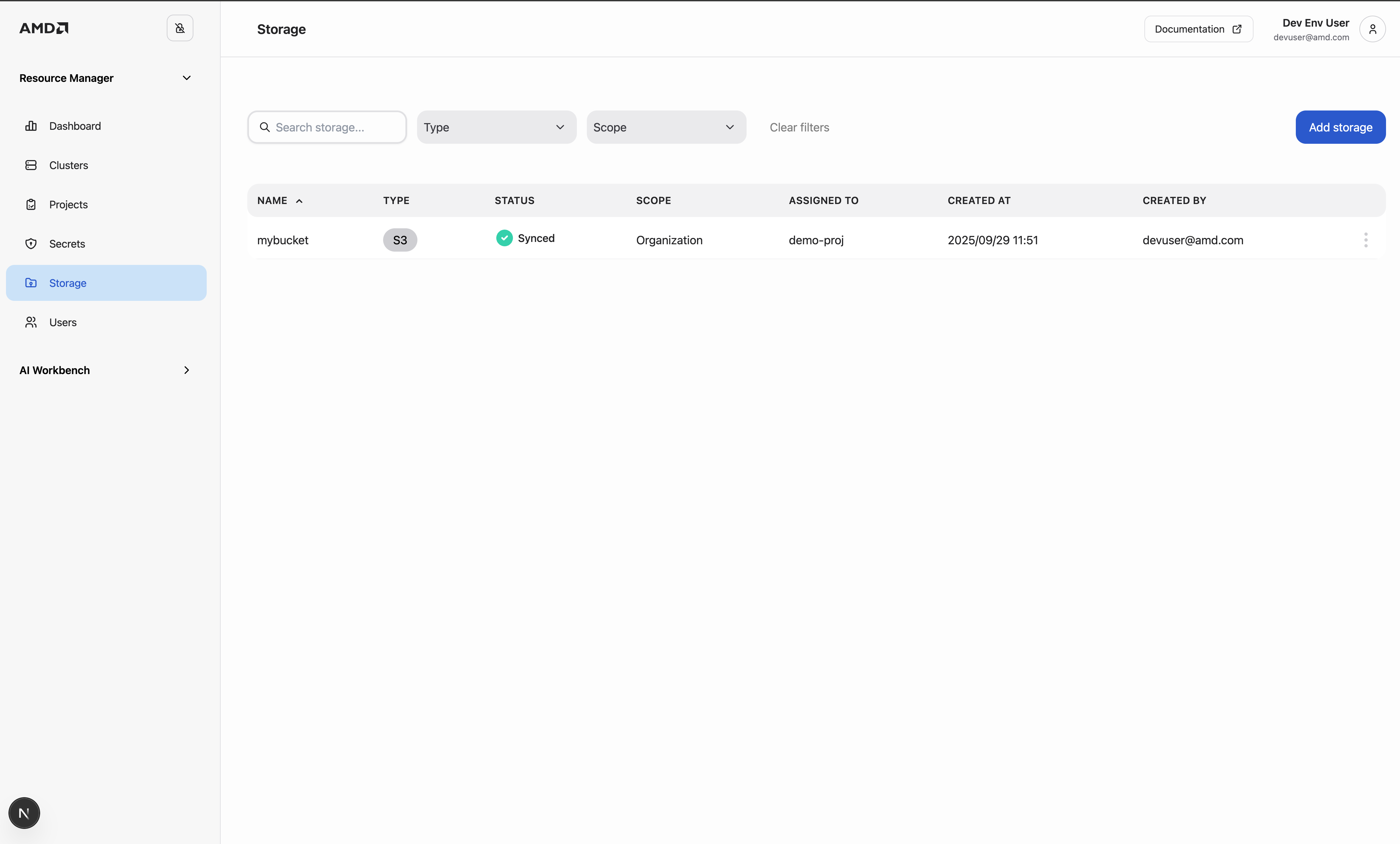
Column |
Description |
|---|---|
Name |
The unique name of the storage resource |
Type |
The kind of storage (e.g., S3, NFS) |
Status |
The current synchronization state (e.g., Pending, Synced, Failed) |
Scope |
Indicates whether the storage is organizational or project-specific |
Assigned to |
Lists the projects currently using the storage |
Created at |
Timestamp when the storage was created |
Created by |
The user who created the storage |
Creating Storage#
To create a new storage resource:
Click Add storage on the Storage page. This opens the Connect S3 Bucket modal, where you can enter the details for the new storage.
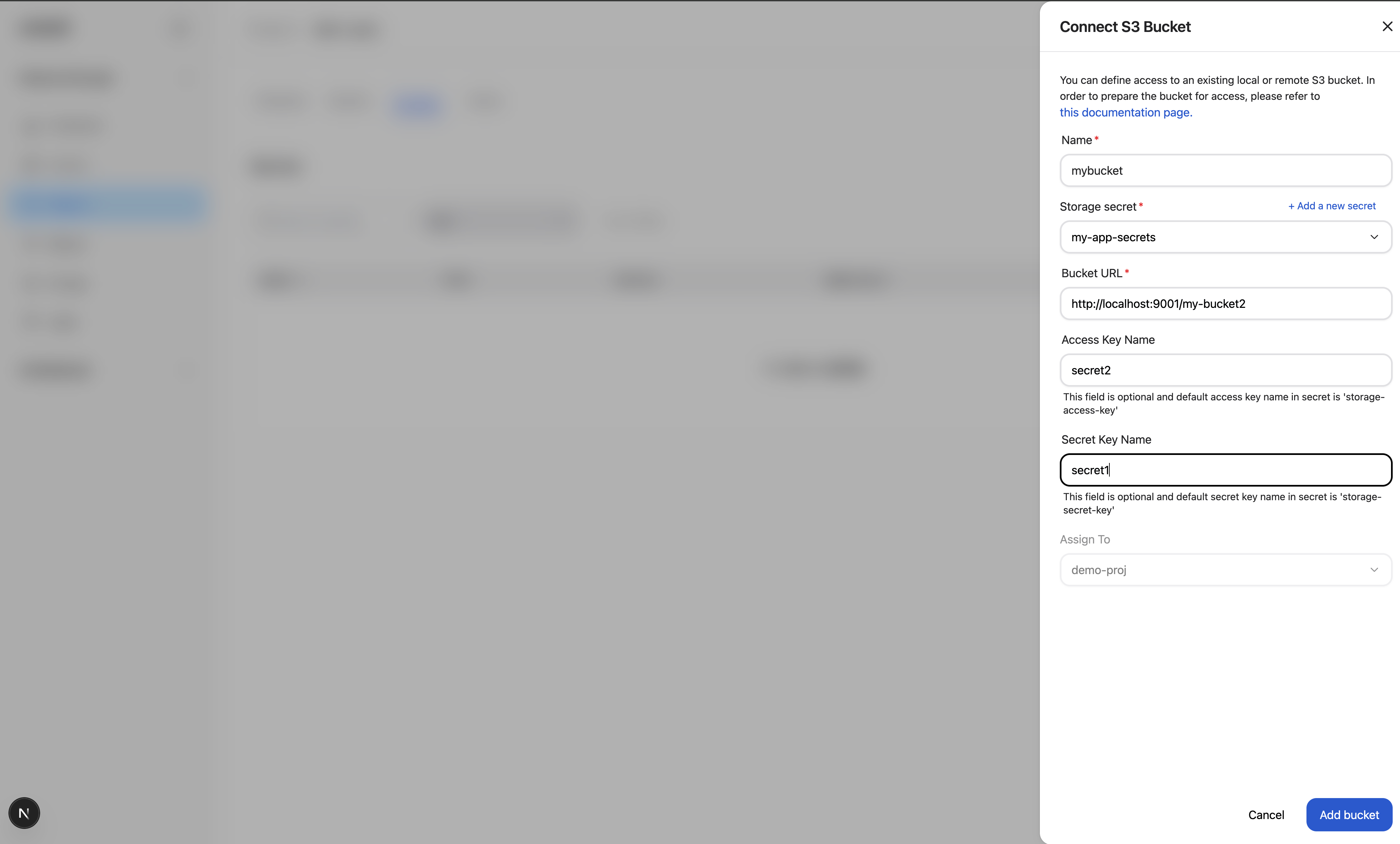
Note
If you need to create a new secret for your storage, follow the instructions in Manage Secrets. The storage creation workflow will prompt you to select an existing secret or create a new one.
In the modal, provide the following information:
Name: The name of the storage
Storage secret (YAML): A valid Kubernetes-style YAML manifest defining the secret (choose from list if available)
Bucket URL: The url of the storage bucket
Access Key Name: The key name in the secret for the access key
Secret Key Name: The key name in the secret for the secret key
Assign to: Select one or more projects to assign this storage to
Storage names must follow naming rules: lowercase letters, numbers, and dashes only (no spaces or special characters).
Assigning Storage to Projects#
Storage can be securely shared across projects. Assigning a storage ensures it is synchronized to that project’s namespace in all relevant clusters.
To edit project assignments, click the actions menu (⋮) at the end of the storage’s row and select Edit assignment. This opens the Edit storage assignment modal, which displays a list of available projects:
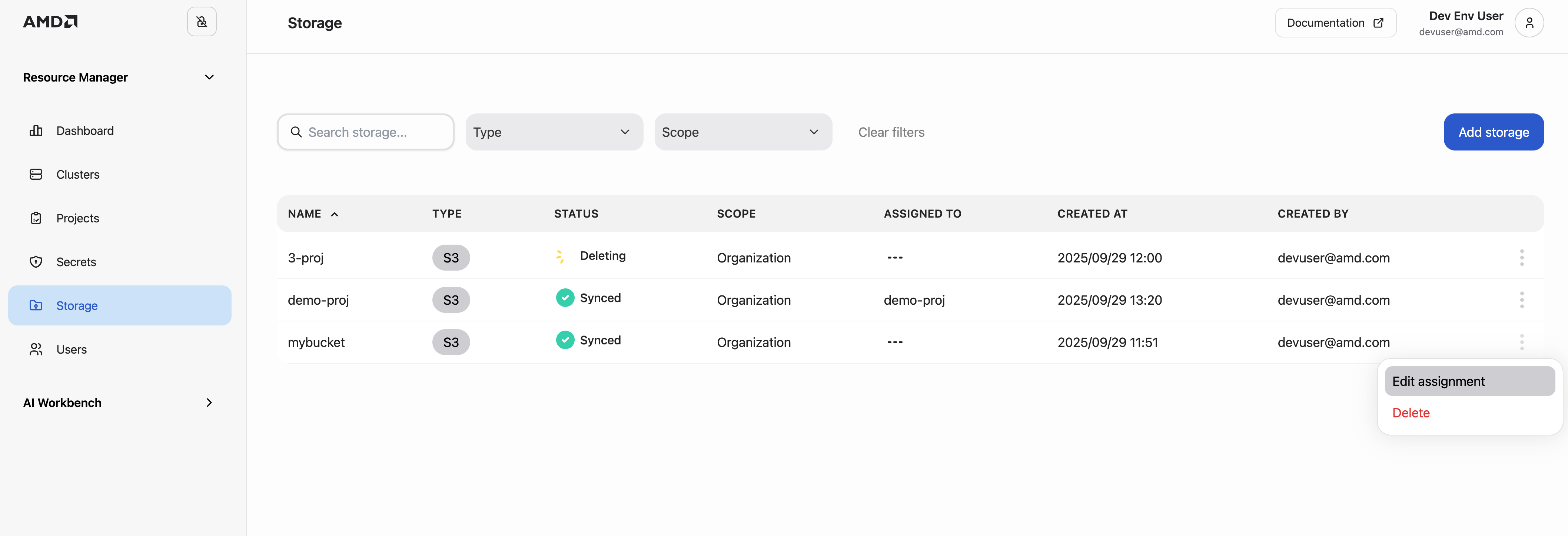
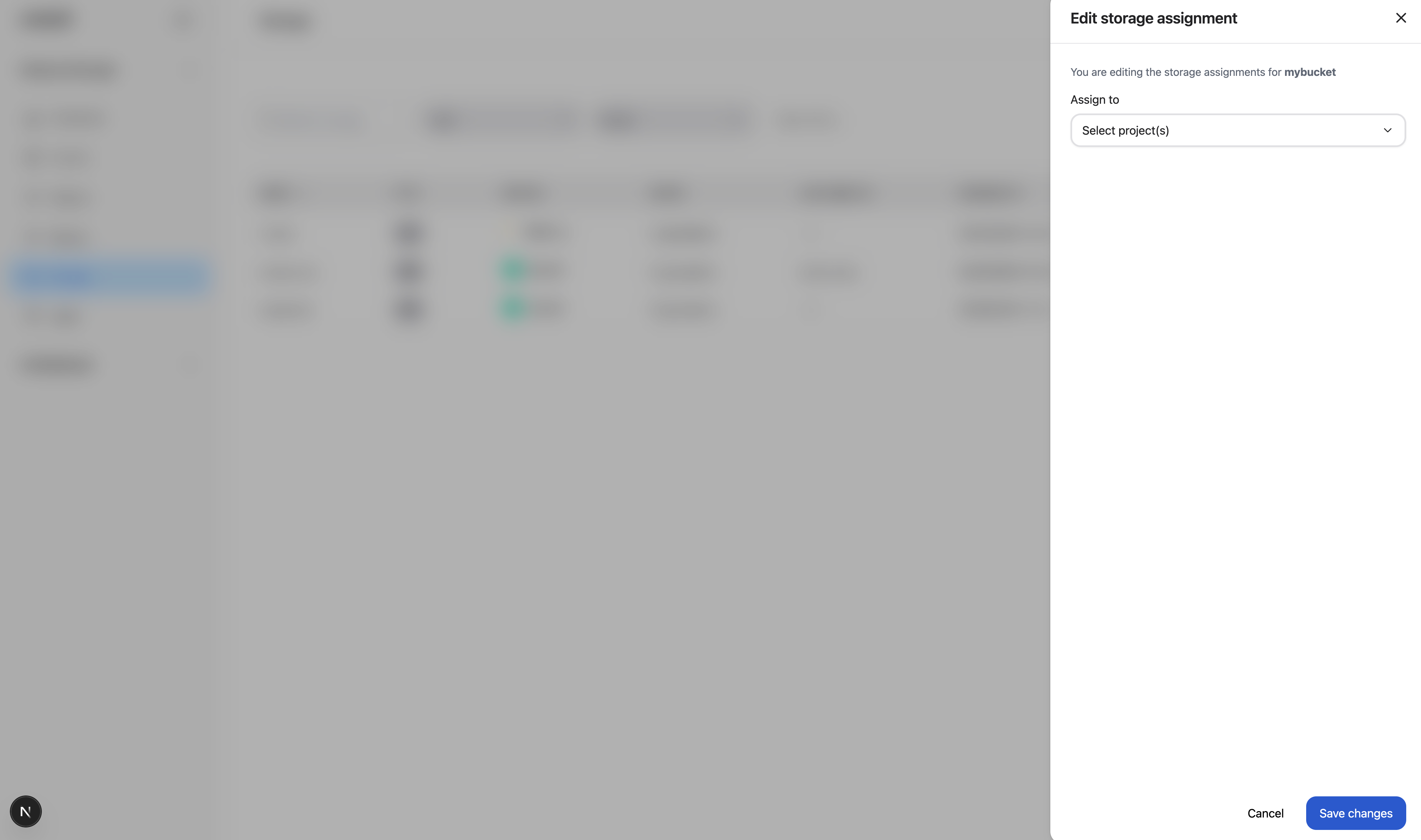
To assign the storage, select the projects you want from the list.
To remove an assignment, deselect any projects that are already checked.
When finished, click Save changes to apply your updates.
Delete storage#
To permanently delete a storage configuration from the organization (and remove it from all assigned projects and synchronized clusters), open the actions menu (⋮) on the storage row and select Delete. This opens a confirmation modal where you must confirm the deletion. Click Delete to proceed.
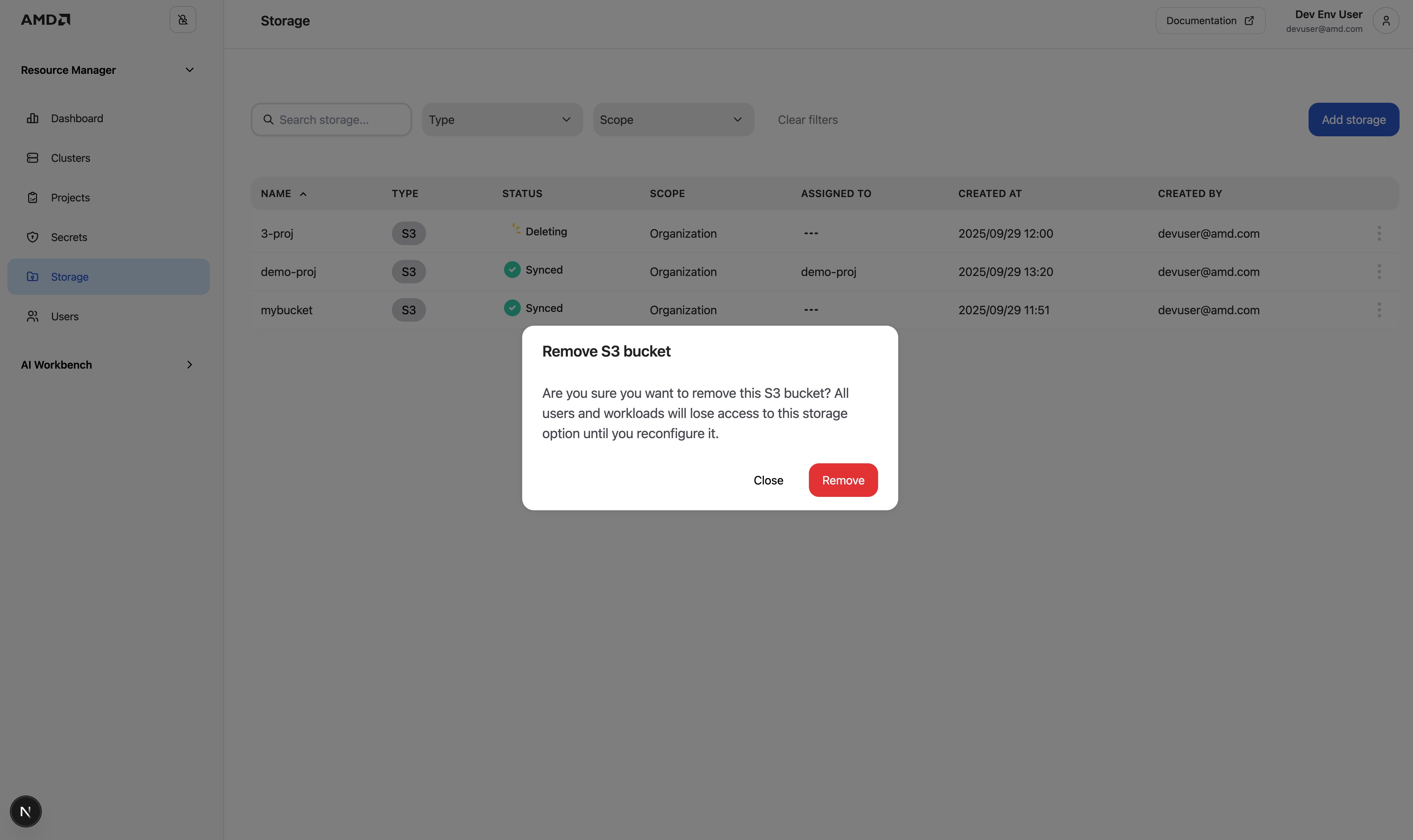
Deleting storage permanently removes it from all projects and clusters.
This action cannot be undone.
Only platform administrators are allowed to delete storage.
View storage within a project#
In addition to the main Storage page, you can also view storage from within an individual project. Each project has its own Storage tab, which lists only the storage assigned to that project.
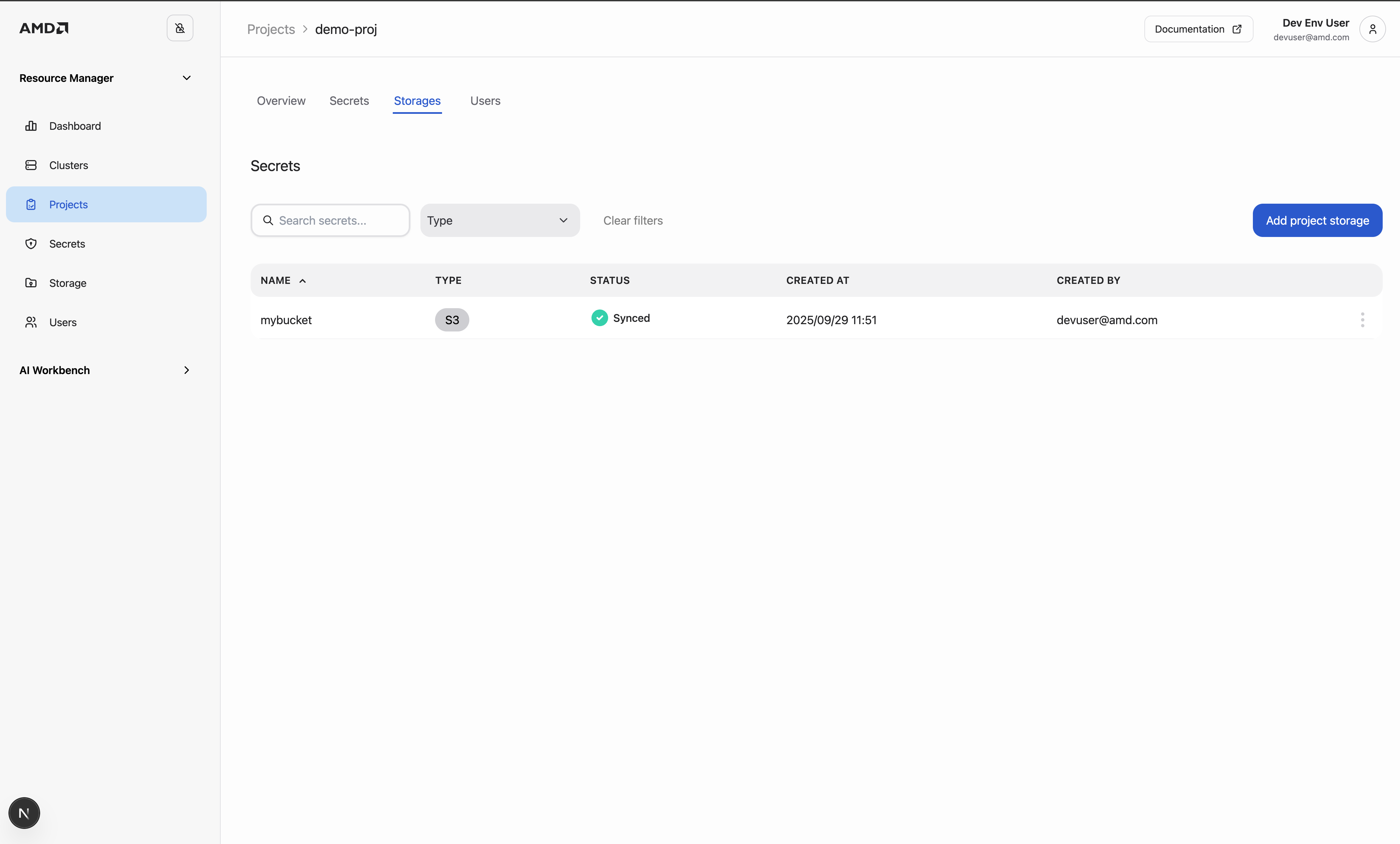
The project-level storage view includes the following information:
Name: The name of the storage assigned to the project
Type: The kind of storage (currently set to S3)
Status: The synchronization status for the storage in that project’s namespace
Created at: The time when the storage was assigned
Created by: Who the storage was assigned by
This view is useful for quickly confirming which storage configurations are available to workloads in a specific project without needing to navigate through the organization-wide Storage page.
Note
When adding storage from the Storages tab, it is automatically assigned to the current project. You will not be able to assign it to additional projects during creation.
Deleting from a project’s Storages tab only unassigns the storage from that project. Use the main Storage page to delete it from the entire organization.
To permanently delete a storage configuration from the entire organization and all clusters/projects, you must delete it from the main Storage page.
Storage statuses#
For a full list of possible synchronization states, see the Storage statuses section in the Storage overview.